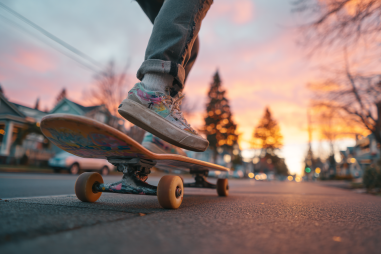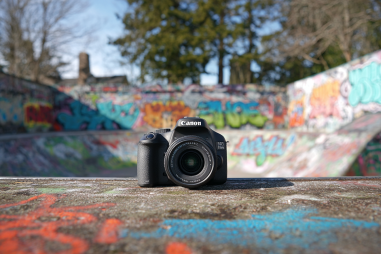Skateboarding is typically associated with warm, dry pavement and sunny skies, but there’s a unique thrill in taking your board out on snowy days. While skateboarding in snowy conditions introduces new challenges, it also offers a fresh way to engage with your favorite sport and push your skills in different environments. With the right approach, preparation, and mindset, you can enjoy skating through the winter months while staying safe and protecting your gear.
Assessing Terrain and Risks in Snowy Conditions
Before you even step on your board in snowy weather, it’s essential to carefully assess the terrain. Snow and ice dramatically change the surface you’re riding on, often making it slippery, uneven, and unpredictable. Take some time to scout your intended ride area, looking for possible hazards such as hidden patches of ice, snow drifts, or debris buried under the snow. Pay close attention to gradients and slopes as well—steep declines covered in snow can become treacherous.
Evaluate the depth and consistency of the snow. Thin layers might feel slick but still offer some grip, while thicker snow can slow you down or cause your board to get stuck. Avoid areas where the snow is melting and refreezing often, as this creates ice patches that are difficult to spot and quite hazardous.
Never skate alone in snowy conditions. The risk involved means having a buddy or someone close by can be crucial in case of falls or accidents. Always skate at a controlled speed to maintain the ability to stop or adjust quickly.
Recommended Skateboard Modifications for Snow
Your usual skate setup might not be ideal for snow-covered surfaces, so some modifications can help you maintain control and extend the life of your equipment during winter skating.
- Wheels: Consider swapping your typical hard wheels for softer, larger wheels. Softer wheels trap more grip and absorb shocks better, which is beneficial on slippery or uneven snow patches.
- Bearings: Winter moisture and slush can lead to rust or damage. Use sealed bearings designed to keep water out, or carry out regular maintenance and lubrication to prevent rusting.
- Deck Treatment: Apply a water-repellent spray or wax on your deck to prevent water damage and maintain some grip on the board’s surface.
- Grip Tape: Regular grip tape might lose effectiveness when wet. Special winter or all-weather grip tapes are available, offering better traction even in damp environments.
- Truck Adjustment: Loosen or tighten your trucks to suit snowy conditions. Tighter trucks might provide better stability, but slightly looser trucks can help with maneuverability on slick surfaces.
Overall, tailoring your skateboard setup for winter will not only improve your performance but can also protect your board against the harsh effects of moisture and cold.
Apparel and Safety Gear for Cold, Snowy Days
Staying warm and safe is just as important as having the right skateboard setup when skating in snowy conditions. Your clothing needs to keep you insulated while allowing for flexible movement and breathability.
- Layering: Use multiple layers to trap heat. Start with a moisture-wicking base layer, add an insulating mid-layer like fleece, and finish with a waterproof and wind-resistant outer layer to keep snow and cold air out.
- Gloves: Warm, waterproof gloves protect your hands not only from cold but also from injuries during falls.
- Footwear: Choose skate shoes or boots with good insulation and grip. Waterproof footwear prevents your feet from getting wet and cold, reducing the risk of numbness and frostbite.
- Helmet: Always wear a helmet; snowy and icy conditions increase the risk of falls and serious head injuries.
- Knee and Elbow Pads: These take on more significance as snowy and icy falls can be harder and more painful.
Balanced, warm clothing combined with effective safety gear ensures that you remain protected from both environmental and skateboarding-specific risks during winter rides.
Techniques for Balance and Control on Slippery Surfaces
Skating on snow and ice requires modified techniques compared to traditional skateboarding on dry pavement.
- Weight Distribution: Keep your weight centered but be ready to shift slightly forward or backward to maintain traction. Avoid sudden weight shifts that could cause your wheels to slide out.
- Speed Management: Slow your pace and make deliberate movements. Speed increases the risk of losing control, especially on slick patches.
- Foot Placement: Place both feet firmly and evenly on the board. Be mindful of your back foot’s position on the tail for balanced pops and manual control.
- Turns and Stops: Execute turns by leaning gently rather than sharp pivots. Use foot braking carefully and progressively rather than sudden stops, which on a slippery surface can cause falls.
- Practice Fall Techniques: Learning how to roll or fall safely reduces injury risk. Snow can cushion falls but still be cautious and try not to land on outstretched arms or wrists.
Mastering these techniques enhances your ability to maintain control and confidence while skating in tricky snowy environments.
Finding or Creating Snow-Ready Skate Spots
Not all skate spots are suitable for skating after snowfall. Seek out areas that have some natural protection from snow accumulation such as covered or semi-covered plazas, garages, or underpasses. Smooth concrete surfaces with light snow can still be skateable.
If you’re more adventurous, consider creating your own snow-ready spot:
- Clear light snow off a chosen area regularly to maintain a hard, smooth surface.
- Use sand or specialized traction materials around edges to reduce icy patches.
- Try artificial turf ramps or rails that hold up better in wet, cold conditions.
Be mindful of property rules and local regulations; always skate in safe, permissible areas to avoid conflicts or damage.
Aftercare for Skateboard and Gear Post Snow Skating
Protecting your skateboard and gear after skating in snowy conditions will help extend their lifespan and maintain performance.
- Clean Your Board: Wipe down your deck and trucks to remove water, salt, and dirt that can cause corrosion.
- Dry Thoroughly: Allow your skateboard and gear to dry completely in a warm, well-ventilated space away from direct heat sources which can cause warping.
- Check Bearings: Inspect and lubricate bearings more frequently during winter to counteract the effects of moisture.
- Inspect Hardware: Make sure nuts, bolts, and other fasteners haven’t loosened due to temperature changes or impacts.
- Store Properly: Keep your skateboard in a dry area to prevent rust and moisture buildup.
Regular maintenance will keep your equipment ready for every snow session and ensure safe, smooth rides.
Enjoying Skateboarding Through Snowy Seasons
Skateboarding in snowy conditions isn’t for the faint of heart, but for those willing to embrace the challenge, it offers a unique way to enjoy the sport year-round. With proper adjustments to your board, technique, and safety precautions, the winter months can bring exciting new experiences and opportunities for progression. Remember to respect the terrain, be mindful of weather changes, and most importantly, have fun as you carve out your own path through the snow. Staying dedicated to skating, even when the ground is white, is a rewarding testament to your passion and resilience.







